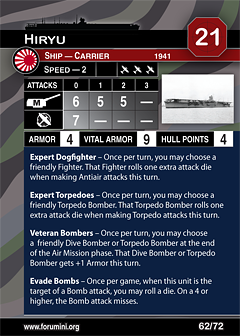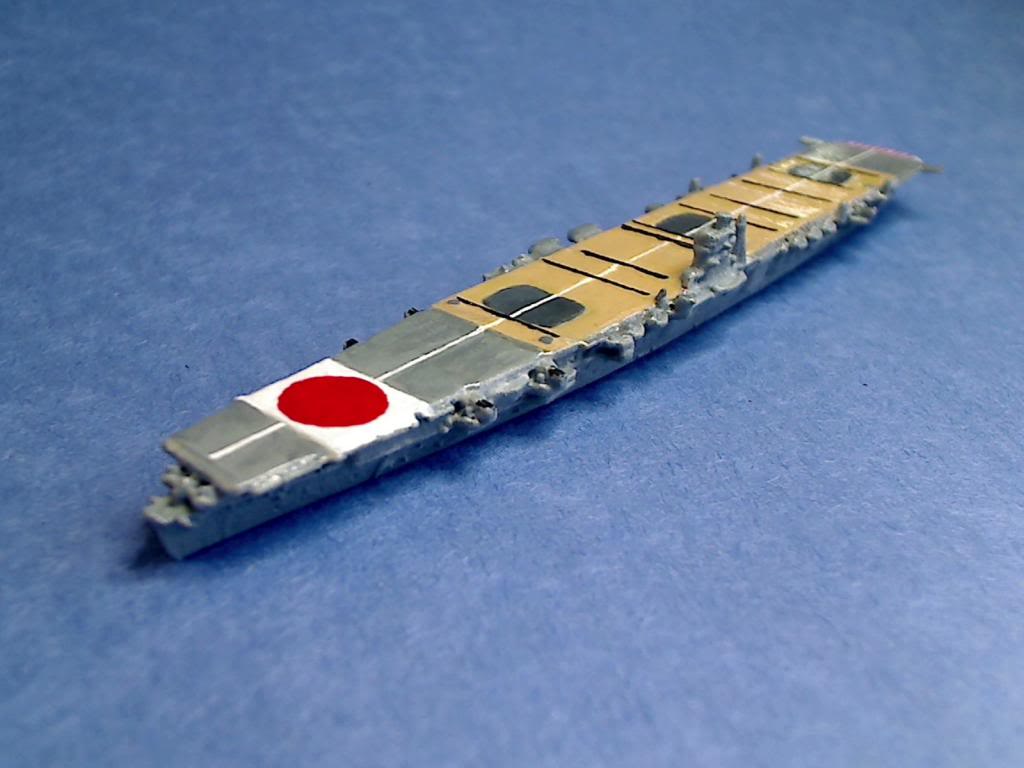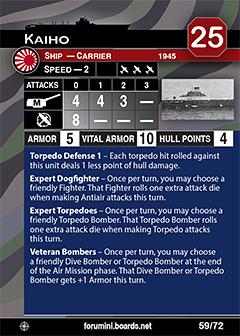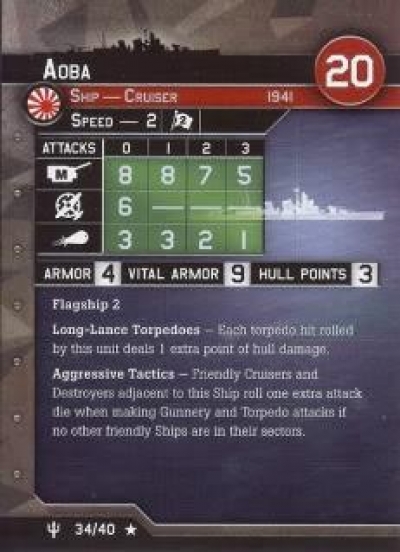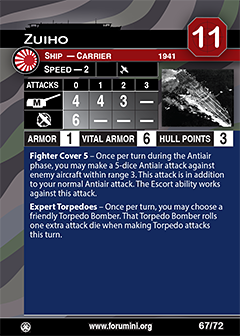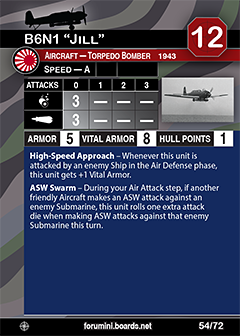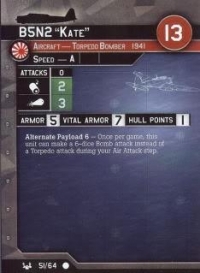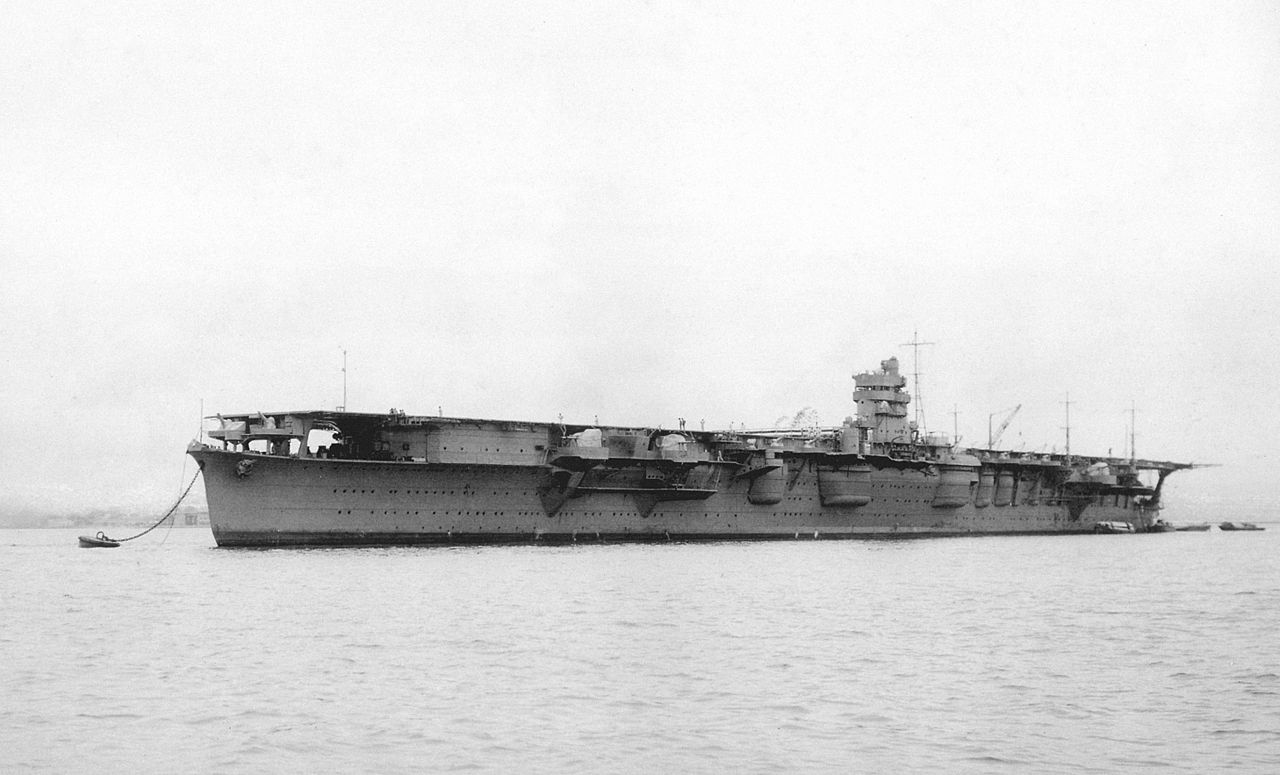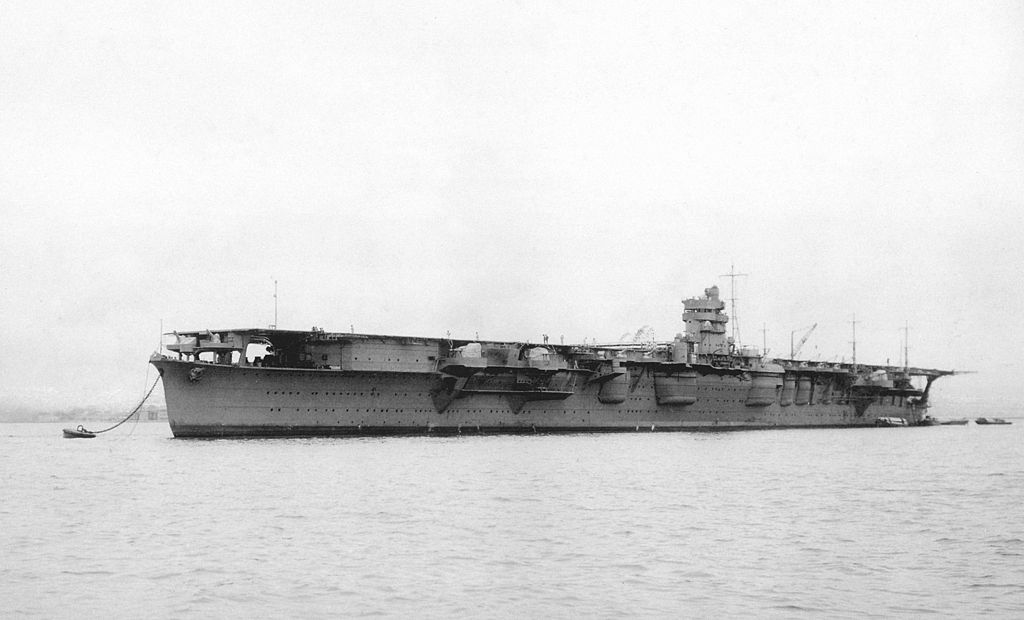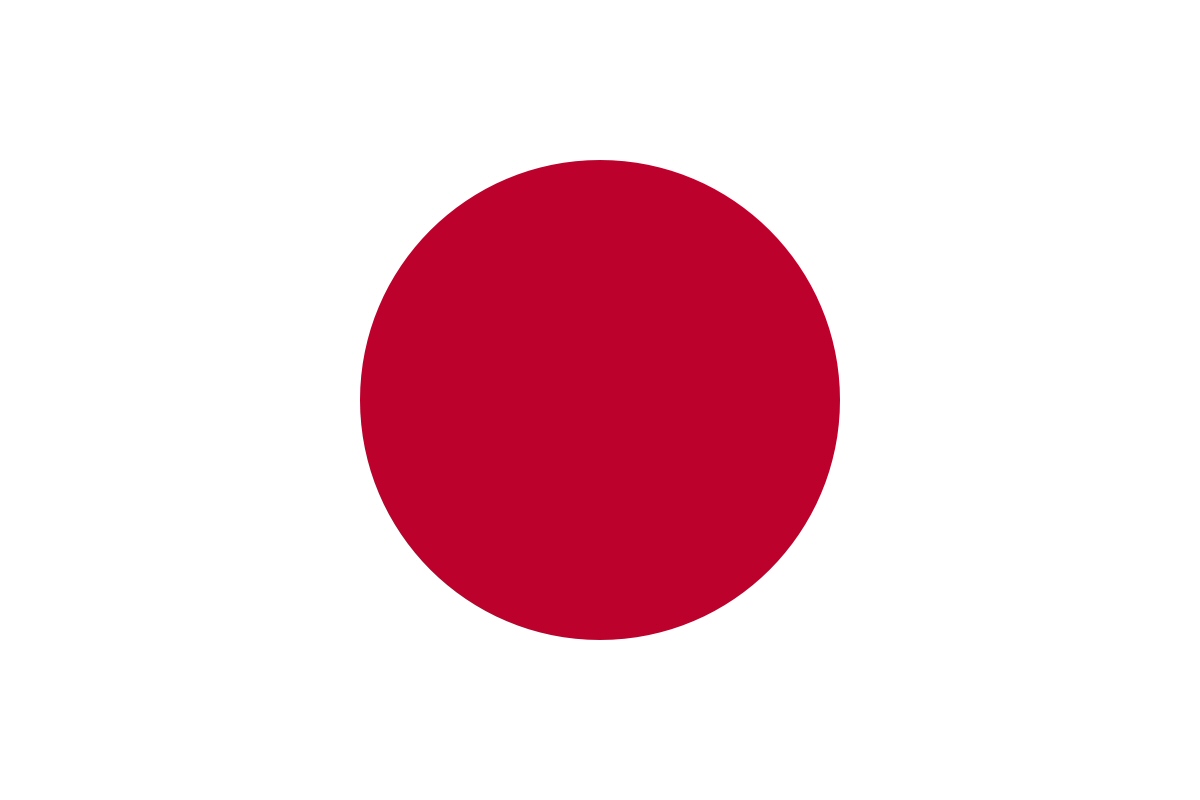Prototype: Hiryū (飛龍, "Flying Dragon") was an aircraft carrier built for the Imperial Japanese Navy (IJN) during the 1930s. The only ship of her class, she was built to a modified Sōryū design.[Note 1] Her aircraft supported the Japanese invasion of French Indochina in mid-1940. During the first month of the Pacific War, she took part in the attack on Pearl Harbor and the Battle of Wake Island. The ship supported the conquest of the Dutch East Indies in January 1942. The following month, her aircraft bombed Darwin, Australia, and continued to assist in the Dutch East Indies campaign. In April, Hiryū's aircraft helped sink two British heavy cruisers and several merchant ships during the Indian Ocean raid.
After a brief refit, Hiryū and three other fleet carriers of the First Air Fleet (Kido Butai) participated in the Battle of Midway in June 1942. After bombarding American forces on the atoll, the carriers were attacked by aircraft from Midway and the carriers USS Enterprise, Hornet, and Yorktown. Dive bombers from Yorktown and Enterprise crippled Hiryū and set her afire. She was scuttled the following day after it became clear that she could not be salvaged. The loss of Hiryū and three other IJN carriers at Midway was a crucial strategic defeat for Japan and contributed significantly to the Allies' ultimate victory in the Pacific.
After a brief refit, Hiryū and three other fleet carriers of the First Air Fleet (Kido Butai) participated in the Battle of Midway in June 1942. After bombarding American forces on the atoll, the carriers were attacked by aircraft from Midway and the carriers USS Enterprise, Hornet, and Yorktown. Dive bombers from Yorktown and Enterprise crippled Hiryū and set her afire. She was scuttled the following day after it became clear that she could not be salvaged. The loss of Hiryū and three other IJN carriers at Midway was a crucial strategic defeat for Japan and contributed significantly to the Allies' ultimate victory in the Pacific.
Class History: Hiryū (飛龍, "Flying Dragon") was an aircraft carrier built for the Imperial Japanese Navy (IJN) during the 1930s. She was a single-ship class.
Country: Japan is an island nation in the Pacific Ocean with dense cities, imperial palaces, mountainous national parks and thousands of shrines and temples. Shinkansen bullet trains connect the main islands of Kyushu (with Okinawa's subtropical beaches), Honshu (home to Tokyo and Hiroshima’s atomic-bomb memorial) and Hokkaido (famous for skiing). Tokyo, the capital, is known for skyscrapers, shopping and pop culture.
Although legend has it that Japan was founded in 660BC, archaeologists agree that settlement in the Japanese archpelago dates back as far as 100,000 years. The Jomon Period (8000-c.300BC) is the earliest that has been studied. It is named after the 'jomon' or cord-marked pattern style of pottery of the period.
Although legend has it that Japan was founded in 660BC, archaeologists agree that settlement in the Japanese archpelago dates back as far as 100,000 years. The Jomon Period (8000-c.300BC) is the earliest that has been studied. It is named after the 'jomon' or cord-marked pattern style of pottery of the period.
Item created by: Lethe on 2015-05-31 17:46:30. Last edited by gdm on 2020-03-13 07:49:32
If you see errors or missing data in this entry, please feel free to log in and edit it. Anyone with a Gmail account can log in instantly.
If you see errors or missing data in this entry, please feel free to log in and edit it. Anyone with a Gmail account can log in instantly.


